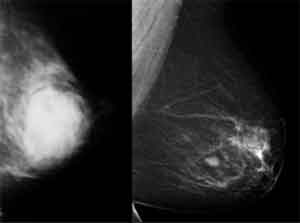- Home
- Editorial
- News
- Practice Guidelines
- Anesthesiology Guidelines
- Cancer Guidelines
- Cardiac Sciences Guidelines
- Critical Care Guidelines
- Dentistry Guidelines
- Dermatology Guidelines
- Diabetes and Endo Guidelines
- Diagnostics Guidelines
- ENT Guidelines
- Featured Practice Guidelines
- Gastroenterology Guidelines
- Geriatrics Guidelines
- Medicine Guidelines
- Nephrology Guidelines
- Neurosciences Guidelines
- Obs and Gynae Guidelines
- Ophthalmology Guidelines
- Orthopaedics Guidelines
- Paediatrics Guidelines
- Psychiatry Guidelines
- Pulmonology Guidelines
- Radiology Guidelines
- Surgery Guidelines
- Urology Guidelines
Contrast-Enhanced Mammography as good as Breast MRI for Residual Breast Cancer evaluation

Contrast-enhanced digital mammography is comparable to breast MRI in evaluating residual breast cancer after neoadjuvant endocrine therapy or chemotherapy, according to the results of a study presented by Mayo Clinic researchers today at the 2017 San Antonio Breast Cancer Symposium.
“Our study aimed to compare contrast-enhanced mammography with breast MRI in evaluating residual breast cancer in patients undergoing presurgical systemic treatment to shrink their tumor size,” says Bhavika Patel, M.D., a radiologist at Mayo Clinic's Arizona campus. “We identified patients who had both contrast-enhanced digital mammography and MRI after treatment to shrink their tumors and before additional therapy or a mastectomy.”
Dr. Patel and her colleagues conducted a retrospective review of contrast-enhanced digital mammography cases at Mayo Clinic's Arizona campus between September 2014 and June 2016. Forty female patients met inclusion criteria. The mean age of study participants was 52.3 years. Thirty-four patients received chemotherapy, and six patients received endocrine therapy.
Researchers interpreted radiographic images in a blinded fashion and compared residual size on imaging to pathology from surgical samples. Their results indicated that both imaging modalities demonstrate comparable accuracy in assessing residual cancer.
“These findings, if validated in larger studies, could potentially support the use of contrast-enhanced mammography as an alternative approach for evaluating residual cancer in the preoperative setting.” Dr. Patel says contrast-enhanced mammography is a potentially easier, faster, more accessible and more cost-effective option than breast MRI. She says Mayo Clinic's Arizona campus is one of the first sites in the U.S. to implement contrast-enhanced digital mammography. “Patients find contrast-enhanced digital mammography less anxiety-provoking than MRI, which can cause some patients to feel claustrophobic,” Dr. Patel says.

Disclaimer: This site is primarily intended for healthcare professionals. Any content/information on this website does not replace the advice of medical and/or health professionals and should not be construed as medical/diagnostic advice/endorsement or prescription. Use of this site is subject to our terms of use, privacy policy, advertisement policy. © 2020 Minerva Medical Treatment Pvt Ltd